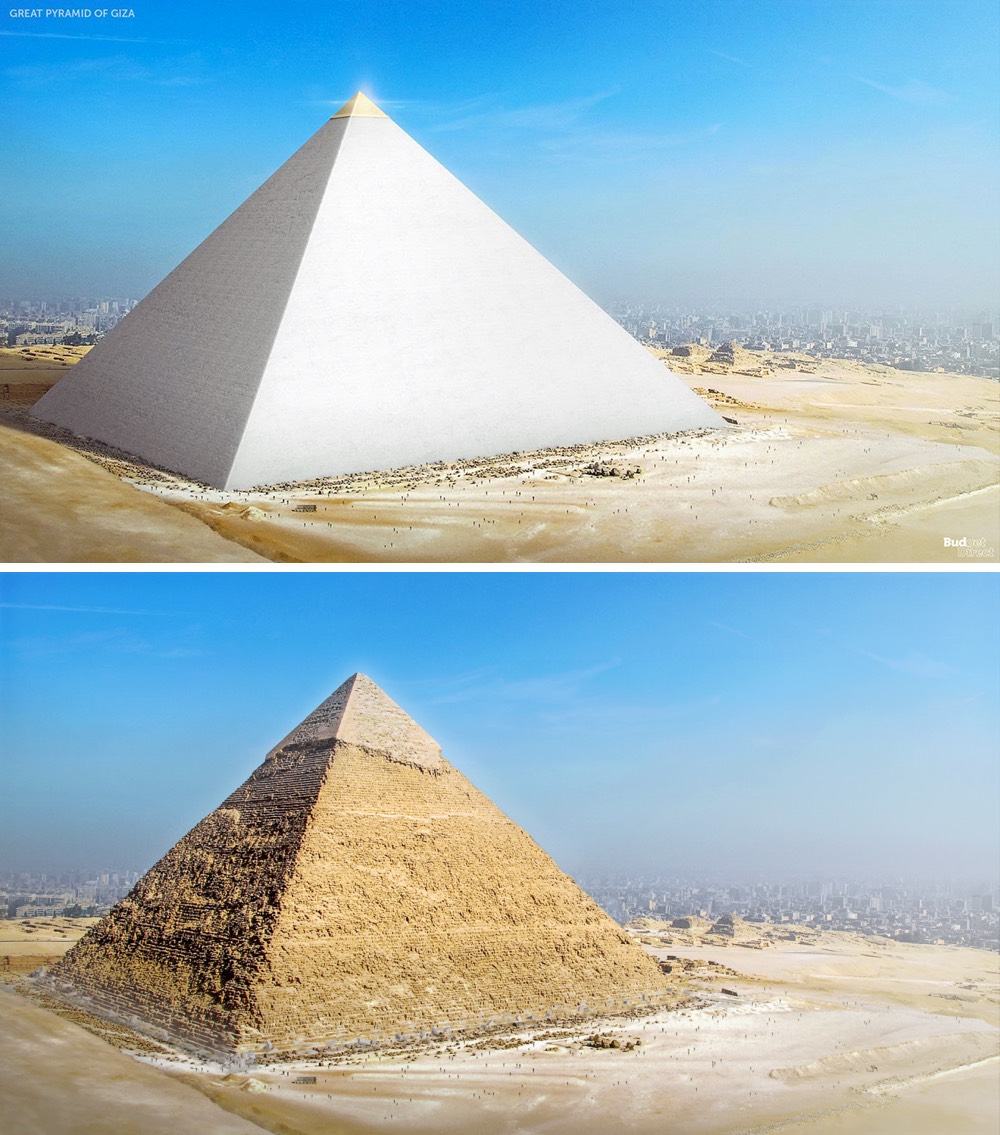The Great Pyramid at Giza—the oldest and most intact of the seven ancient wonders of the ancient world—became a potent symbol of the sublime in the 19th century, a symbol of power so absolute as to eclipse human understanding. After Napoleon’s first expedition to Giza, “Egytomania… swept through European culture and influenced the plastic arts, fashion, and design,” writes Miroslav Verner in The Pyramids: The Mystery, Culture, and Science of Egypt’s Great Monuments.
At the end of the century, Herman Melville satirized the trend that would eventually give rise to Ancient Aliens, asking in an 1891 poem, “Your masonry—and is it man’s? More like some Cosmic artisan’s.” Egyptomaniacs saw otherworldly magic in the pyramid. For Melville, it “usurped” nature’s greatness, standing as “evidence of humankind’s monumental will to power,” as Dawid W. de Villiers writes.

The ancient Greeks believed the pyramids were built with a massive slave labor force, a theory that has persisted. As Verner exhaustively argues in his book, however, they were not only built by humans—instead of aliens or gods—but they were constructed by tradesmen and artisans whose skills were in high demand and who were paid wages and organized under a complex bureaucracy.
And as you can see reconstructed in the Smithsonian video at the top, one of those artisanal tasks was to polish the monument’s outer limestone to a gleaming white finish that reflected “the powerful Egyptian sun with a dazzling glare.” Once the pyramid was completed, “it must have truly added to the impression of Giza as a magical port city, bathed in sunlight,” says archaeologist Mark Lehner in the clip.
In addition to its glowing, polished limestone sides, “the structure would have likely been topped with a pyramidion, a capstone made of solid granite and covered in a precious metal like gold,” writes Kottke. “No wonder they thought their rulers were gods.” Or did ancient Egyptians see the Great Pyramid as a masterpiece of human engineering, built with the skill and sweat of thousands of their compatriots?
Who can say. But it’s likely that 19th-century European explorers and artists might have characterized things differently had the Great Pyramid still scattered the sun over the desert like an ancient beacon of light instead of sitting “dumb,” as Melville wrote, stripped of its facade, waiting to have all sorts of mysterious meanings wrapped around it.
via Kottke
Related Content:
How the Egyptian Pyramids Were Built: A New Theory in 3D Animation
The Grateful Dead Play at the Egyptian Pyramids, in the Shadow of the Sphinx (1978)
Josh Jones is a writer and musician based in Durham, NC. Follow him at @jdmagness


They pic Chephrens Pyramid with cap, that is next to the Great Pyramid, first one, with small flat top with rod and cable to show it,s original height when had its casing stones.
See the waterline at the top? Flood?
Thanks for the Photoshop, I’ve waited for years for somebody to show me a white clad, golden topped pyramid. Glorious!
Amazing digital reconstruction! Imagine how the entire Giza plateau must have looked once the site was completed. Magnificent!
Good thinking. And it has the pattern for prime numbers hidden in the structure.
No, simple degradation from thousands of years of it being open to the elements. Ancient civilization theorists believe the water flow of the Nile has since migrated further east, where it stands today. But in ancient times the Nile was right in the pyramids back yard.
I love it BUT the surounding grounds would have been heavily laden with lush gardens, pathways and several lesser buildings.
All this in Stark Contrast to the bare dessert sand shown here … plus of course the Nile flowing near by with boats etc.
All simple additions for even a novice computer-graphics technician. Try it. The results will be Stupendous!
Pretty soddy using Kephren pyramid as Khufu’s Great Pyramid.
The Great Pyramid will always remain a miracle of architecture!
I like turtles
I never knew the Pyramids were white back then.
Good to acquaint you
See you many more times
La vidéo montre comment les ouvriers étaient sensés polir les pierres. On essaie toujours de nous faire avaler ça, alors regardez bien la machine que l’un d’entre eux à dans ses mains et vous comprendrez tout le reste. On veut à tout prix éviter les bonnes questions.
That is not the Great Pyramid of Giza, but the Pyramid of Kafre. It takes all of your credibility away when you mess up so basic facts.
I see this all the time on the internet. Since I learned which is which, it drives me crazy to see.
Why are you posting a picture of what the pyramids supposedly looked like made by a budget insurance company? What exact qualifications do they have to accurately do that? Probably none.
Also, the fact that it’s made by a budget insurance company in Australia or something. Zoom in on the bottom right corner.